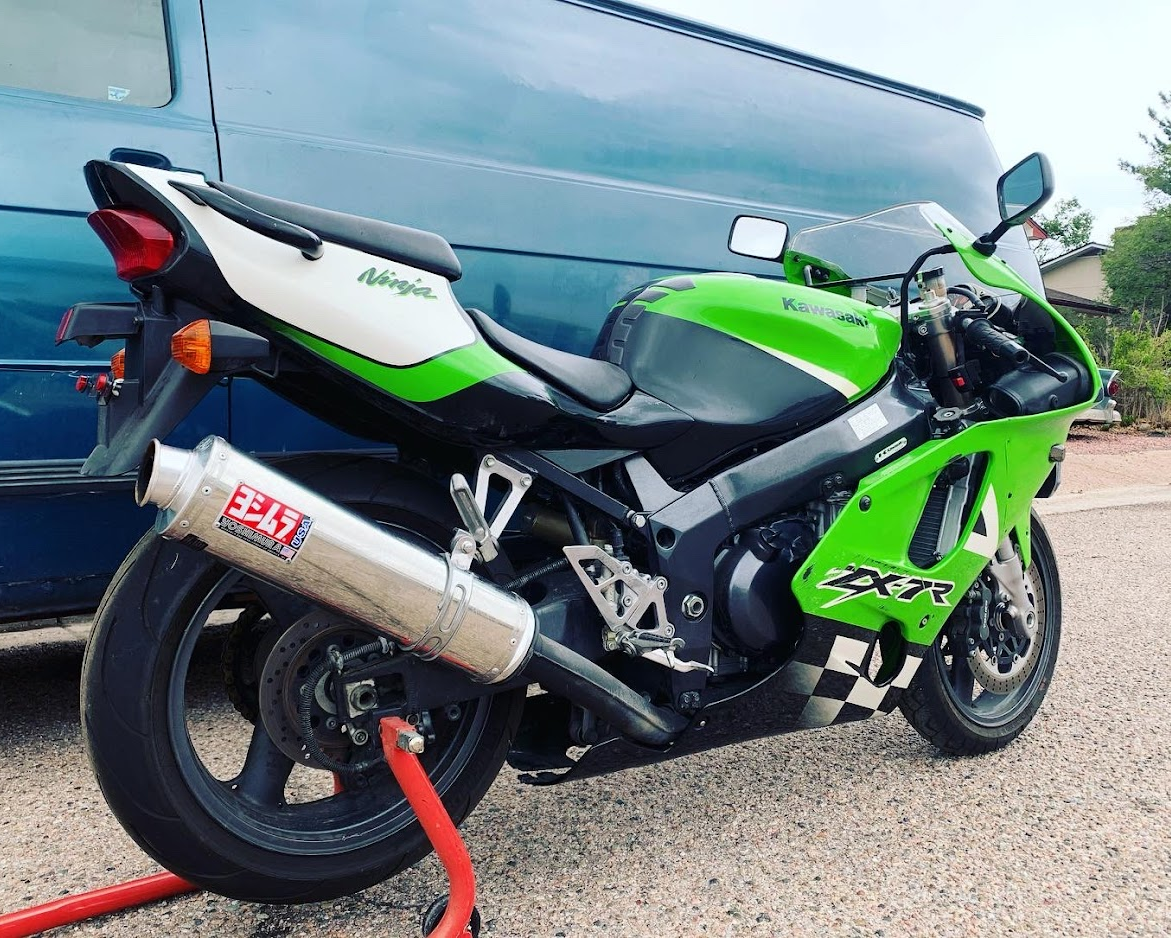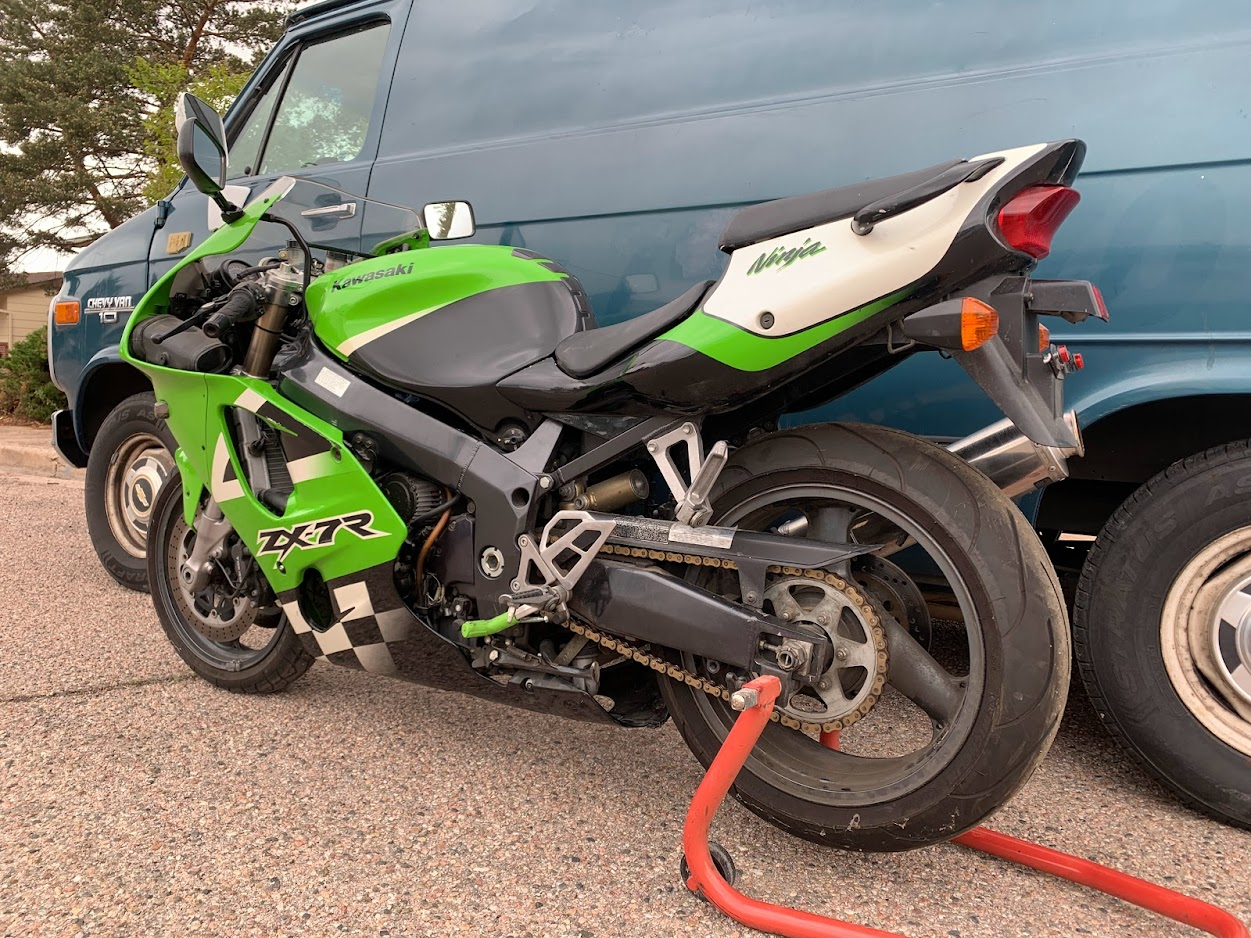Kawasaki ZX7R Project, Buying a 90s Sportbike, Valve Adjustment, Carburetor Notes
Earlier this year I was on the hunt for another project bike. I wanted a 90s sportbike. I had a short list: CBR900RR, GSXR750 SRAD, or ZX7R. Whether it would turn into a race/track bike or a street bike would be dependent upon the condition of the bike I managed to buy. If it was far gone, lacked a title, and needed fairings and a tank etc. it would become a track bike. If it was largely complete and had a title, it would become a street bike. I lucked out and found an ’02 ZX7R that was complete and in otherwise good shape with a title that needed quite a bit of work. I wish I would have saved the original ad I saw on Craigslist, but I did not, so you’ll have to settle for some textual scene setting here instead.

The ad had been posted that morning. It depicted a disassembled, incomplete-looking green, white, and black 2002 Kawasaki ZX7R. The photos showed half of the bike at a time at best. It was in a well-to-do suburban garage surrounded by childrens’ toys. The ad copy told a story of a bike that used to be great but needed some work. The person listing it found himself in over his head with the project. His cat had apparently knocked the rack of carburetors off his workbench, shattering part of the #4 carburetor. I immediately sent him an email saying I wanted it. He sent me his phone number, and we worked out a time later that day for me to pick it up. The asking price was $300 without the stands or $400 with the stands.
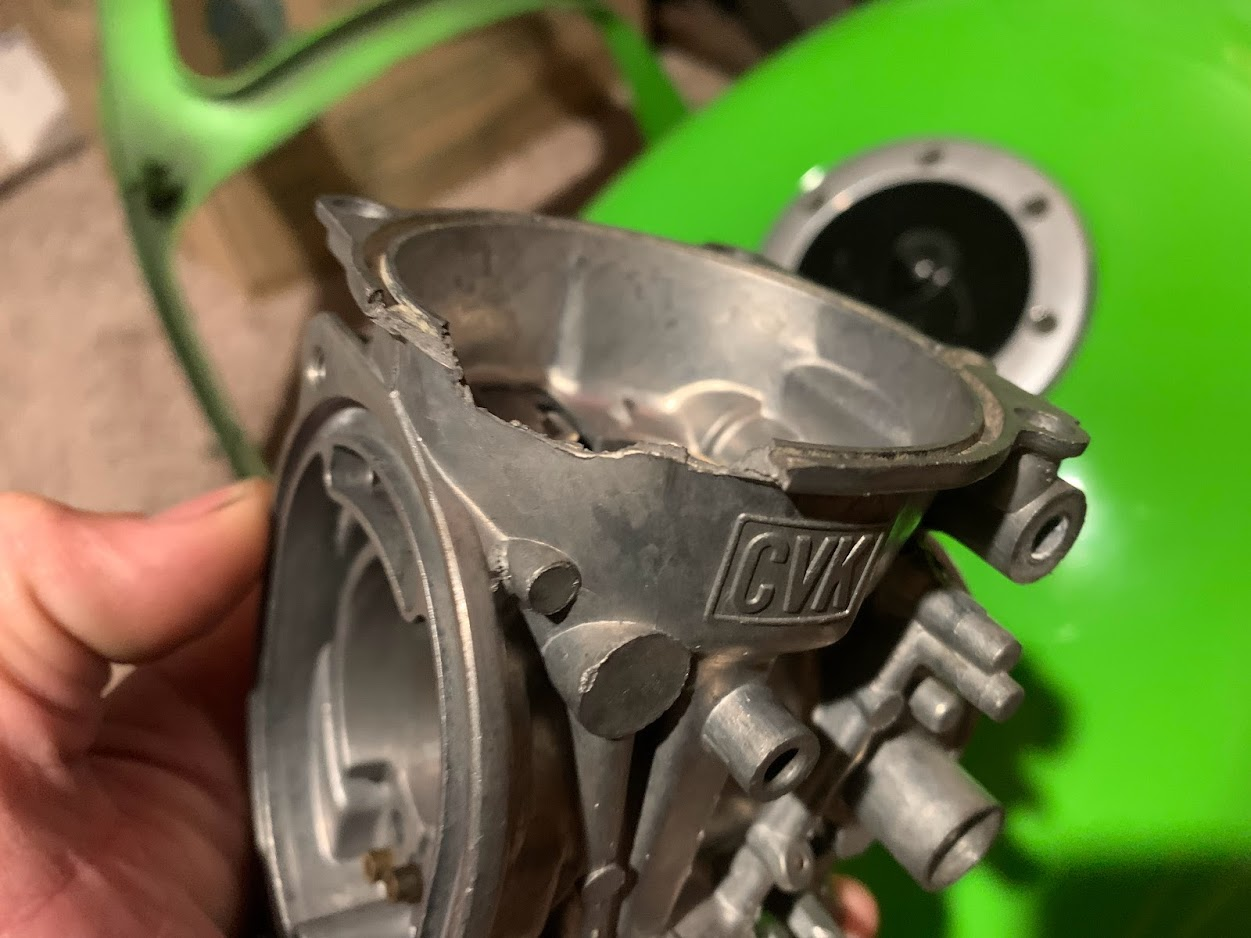
This ad had a lot going for it in my opinion. It was hastily thrown together. The pictures were terrible. That means most people aren’t going to bother responding. It showed the bike stored indoors. I feel about the same about storing motorcycles outdoors as I do about people who don’t let their dogs inside. It’s common for people to give their bikes and other hobbies up after having children, making for a credible story. It shows that the seller has some sense of priorities and values what’s important to him. I was amazed to find out that I was the only person who responded to the ad that day.
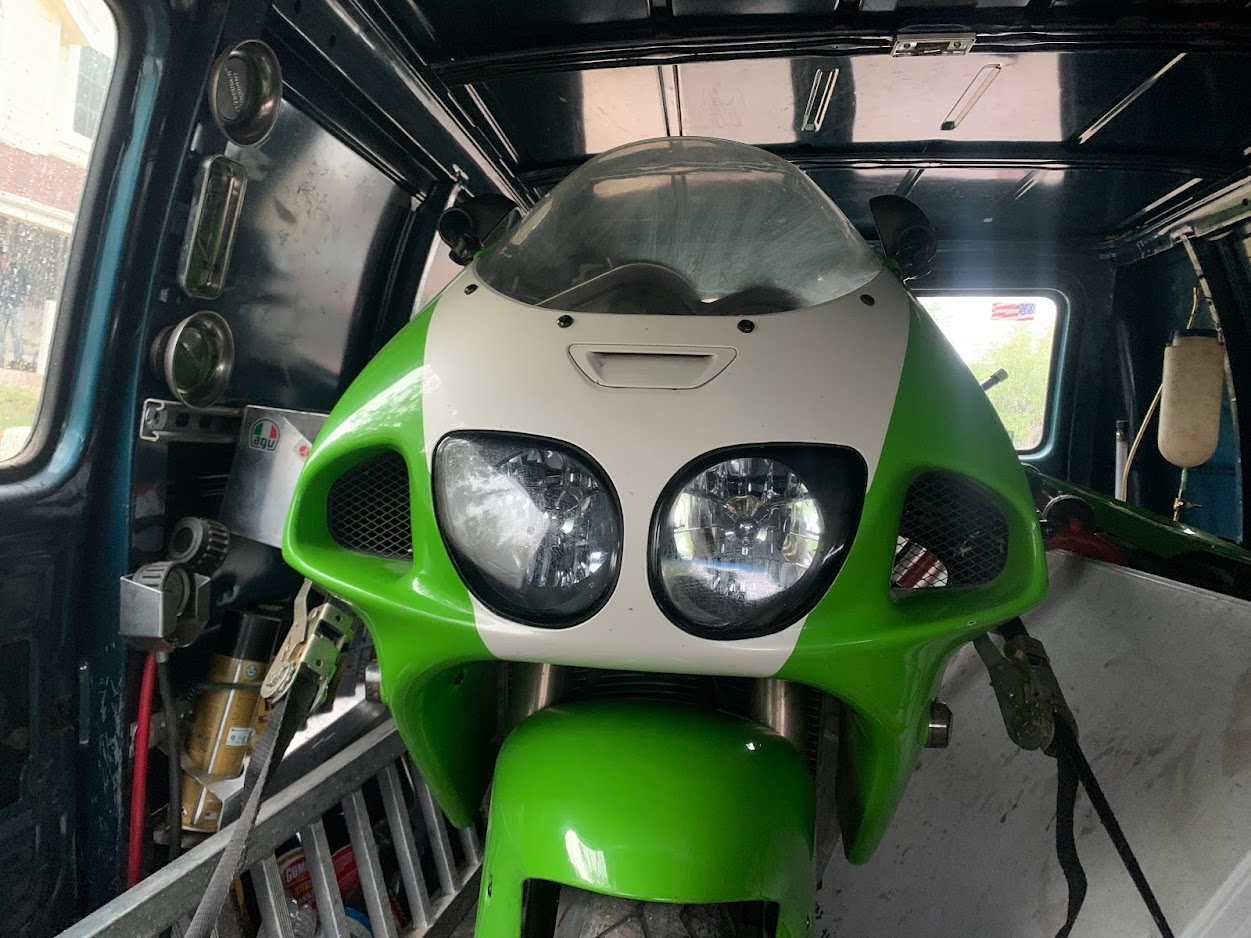
What I found when I got there was not what I was expecting. I was expecting the bike to be missing a title, its fairings, its airbox, and its tank. None of these items were pictured in the ad. It was like Christmas morning when I got there and gently asked if he had the fairings, and he produced them. Tank? That too! Airbox? Yes! Somewhat sheepishly, I asked about maybe a title. “I have that too, in my name” he said. Holy shit, this is a smoking deal I thought. I had intended to take the bike for $300 without the stands, but after seeing the embarrassment of riches set before me, I handed him $400 and said I would take the stands too. In truth I would have been happy to have paid three times as much.

The thing about buying bikes is I don’t want to buy them from people who desperately need the money from selling them. The seller lived in a nice house. He had a wife and children. He apparently had his shit together, and I doubt the difference between $400 and $1200 for a 20-year-old motorcycle meant much to him. Obviously it didn’t or he would have been asking for more, and he would have taken better pictures, and I would have thought more of buying it. As it stands, he sold the bike quickly to someone who really loves and cares about these bikes, who will restore it to its former glory, and enjoy it as it was intended on the backroads and race tracks of Colorado. Bikes are sentimental objects, and sometimes knowing a project is in good hands is worth something. I loaded the bike into my van and eyeballed it all the way back home, thinking about what sort of project I would make of it.
The Carburetors
A cracked #4 carburetor was the first thing I addressed on the bike. As luck would have it, I found a usable carb body on eBay for $50 the evening after I brought the bike home.

The seller had somewhat meticulously disassembled the carburetors and organized all of the parts in Styrofoam cups. Everything was there, including the downsized “high altitude” jets specified by Kawasaki. I then let the bike and all the parts sit for 6 months during the racing season. Now that it’s cooled down and there’s no more racing, I’ve had time to get this old Kawi running again.
I started with the carbs. I unganged them and replaced the cracked carburetor body. I put the carbs on a test bottle and lo and beyond, they leaked from the fuel Ts, so I ordered new o-rings (6.9mm ID x 1.33mm CS v 7mm ID x 1.00mm CS, either works but the 6.9mm rings are a tighter fit) for the fuel Ts and installed those. The carburetors were the easy part. The next step in the process of making this bike run was to do a valve adjustment. I measured the clearances shortly after acquiring the bike and all of them were tight. I ordered a set of 7.48mm shims and a new valve cover gasket just to be safe.
ZX7R Valve Adjustment
I wrote down the clearances I measured the first time I measured them. 6 months later, I measured them and wrote them down again.

I got about the same measurements both times around but decided to go with the most recent measurements. The old measurements are pictured written on the pages of the service manual, the new ones are in my notebook. You can see for yourself which ones turned out slightly different: EX #3, IN #5, EX #7.
To measure them, I disassembled a set of feeler gauges and set sizes 0.1mm through .38mm on my “work bench”. I’ve found separating them keeps me from having to fumble through them as I’m checking clearances; it’s a lot easier this way.
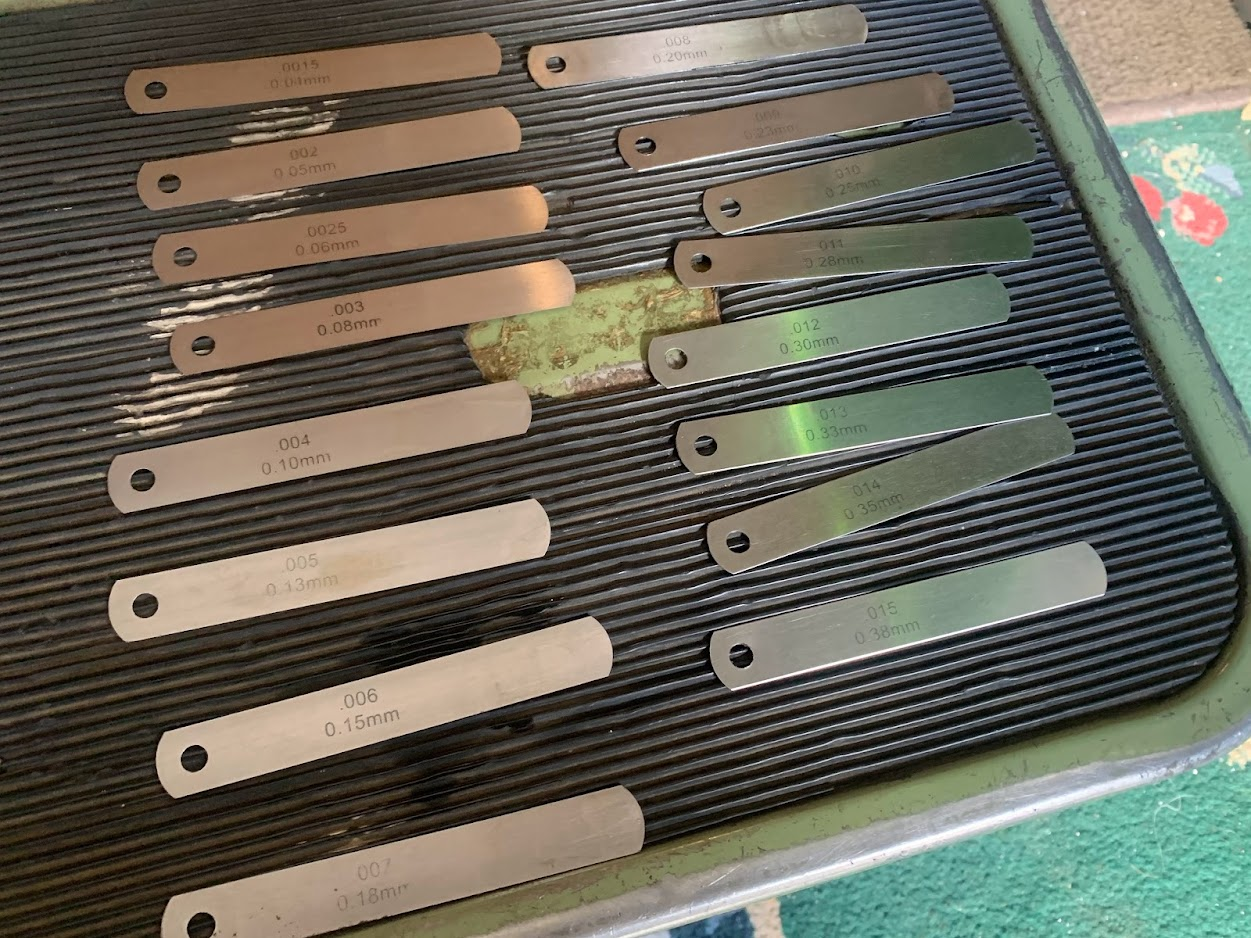
Truth be told, I’ve adjusted the valves on a lot of single cylinder motocross bikes with shim-under-bucket valves, but I’ve never done it on a 4 cylinder motorcycle before. My GSXR has screw-type adjusters, which makes the process a lot easier. The idea is the same, there’s just more to it. I had it done in half a day.
The Clymer manual I used for information is all but worthless. It told me to drop the engine or else I wouldn’t be able to see the timing marks on the cam sprockets, resulting in guaranteed engine damage if the engine didn’t go back together properly. It also told me to INCREASE the width of the shims to widen the clearance between the cam lobe and the bucket. OKAY SIR THAT MAKES NO SENSE BUT OKAY. Obviously I’m not going to do either of those things, but misinformation like this would confuse the uninitiated and less experienced.
The only information I used from the manual was the proper clearances and how to put the #1 and #4 cylinders at TDC. Apart from that, I used my experience to get the bike apart, measure the shims, and reassemble it with new shims for the proper clearances.
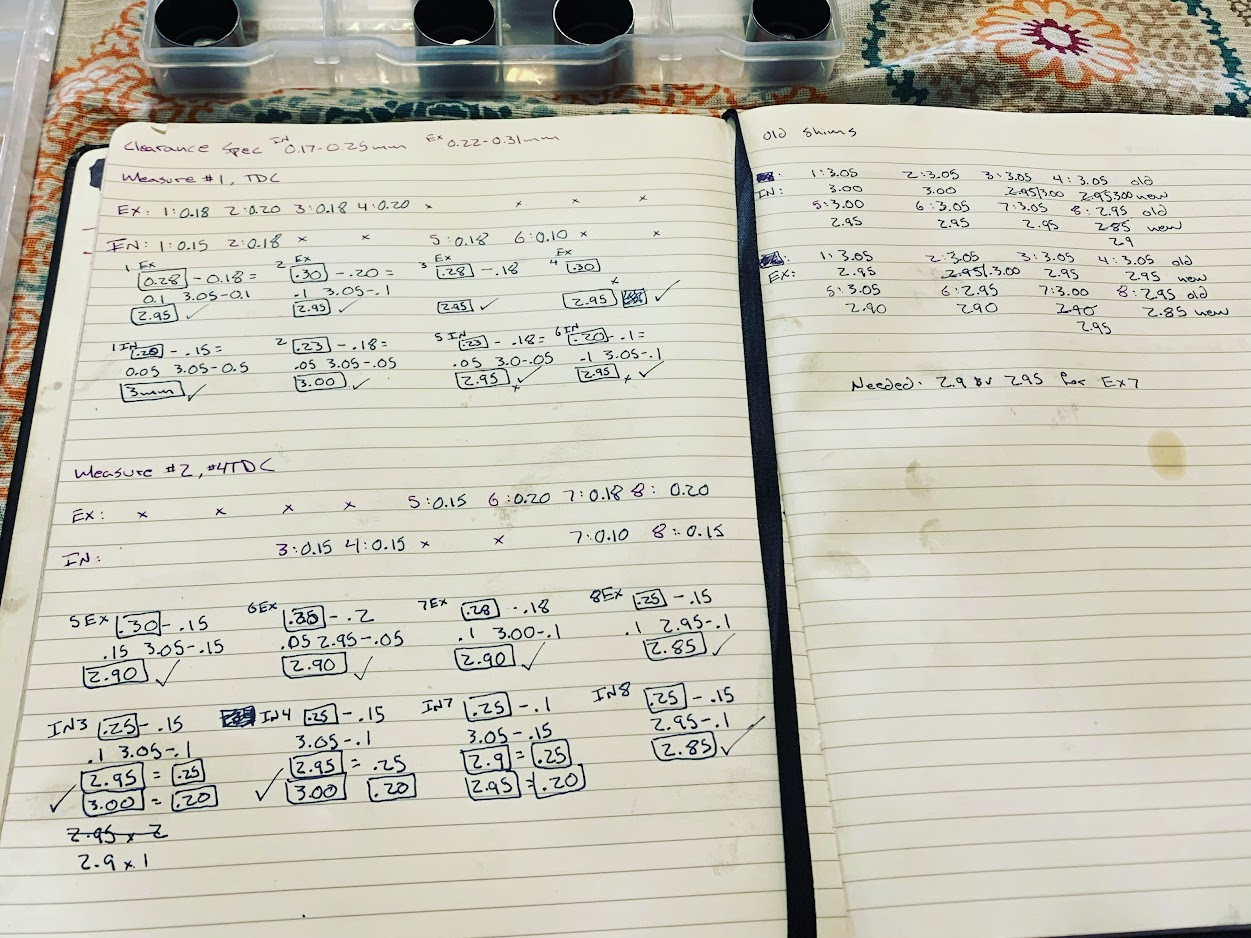
The math isn’t hard, but I had to repeat it 16 times, so I checked, rechecked, and triple checked it to make sure I was getting everything right and the final clearances would be correct. Then I ran into a problem: the shim kit only includes 3 shims for each size, and I needed more than 3 of each size. So I mix and matched some old shims and closed some of the clearances by 0.05mm, but still well within spec, to use what I had and finish the job on the same day.
The cams are marked on the outside and inside, for anyone out there who may be wondering. I also marked the cam chain with a paint pen on both sprockets and the timing wheel on the crank to make sure they went back in properly on the first try. The process was not difficult at all. I was pleasantly surprised by how easy it was for me to complete. Once all of it was back together, I spun the engine by hand and made sure everything moved smoothly, and it did.
I then measured all of the clearances after reassembling the engine, and all of them were in spec. Delighted, I set about installing the carburetors and seeing if the bike would be a runner.
Does It Run?
After installing a new battery, fitting the carbs, and hooking them up to a test bottle, the moment of truth was upon me. I activated the choke and started spinning the engine around. I know from experience that these old Kawis don’t like going without their airbox, so after a few seconds of spinning I choked the carbs with my forearm and the bike slowly sputtered to life. After a minute or so the bike was idling on its choke! It was a low idle that increased as time passed, so I started taking in the choke. After a few more minutes warming up, the bike was off of its choke and would idle as long as I simulated an airbox with my forearm.
I then installed the airbox and the bike idled and ran great with no need to choke the carbs with my forearm. I gave it a good rev to 10k once it was warmed up just for kicks, and it hit the mark with that classic sportbike screech I know and love so much. I let the bike cool down and started it again later that day after the engine temp hit close to ambient. It started easily on the choke, warmed up fine, and ran great. LADIES AND GENTLEMEN AND NBS WE HAVE OURSELVES A RUNNER!!!
Next Steps
Though the bike is very nice for its age and mileage, it’s not perfect by any means. It was not abused. Nor was it modified in any way by stupid children, which is a rarity among 90s sportbikes. Most of these bikes did not survive their many owners over the years. I’ve found sportbikes in the wrong hands go to shit about as fast as a carton of eggs in the hands of a toddler. The specs on these machines, even machines that are 20+ years old, are just staggering. 0.75L engine, 125hp, 12.5k RPM redline. The ZX7R engine makes as much power as the 2.0L 4-cylinder in my Transit van. These kinds of numbers come at a price: maintenance is required and ignoring it ruins the bike in short order.
The next steps in this project amount to making it roadworthy, insuring it, and putting a plate on it. It needs a new front tire. The fairings are not perfect, but I would rather have scratched factory fairings than new made-in-China fairings that aren’t quite the right color and don’t have the right patina. I am on the look out for factory or factory-like decals to replace the scuffed ones on the fairings. If I can find a set of perfect factory fairings, fat chance, I will buy those even if the price is high.
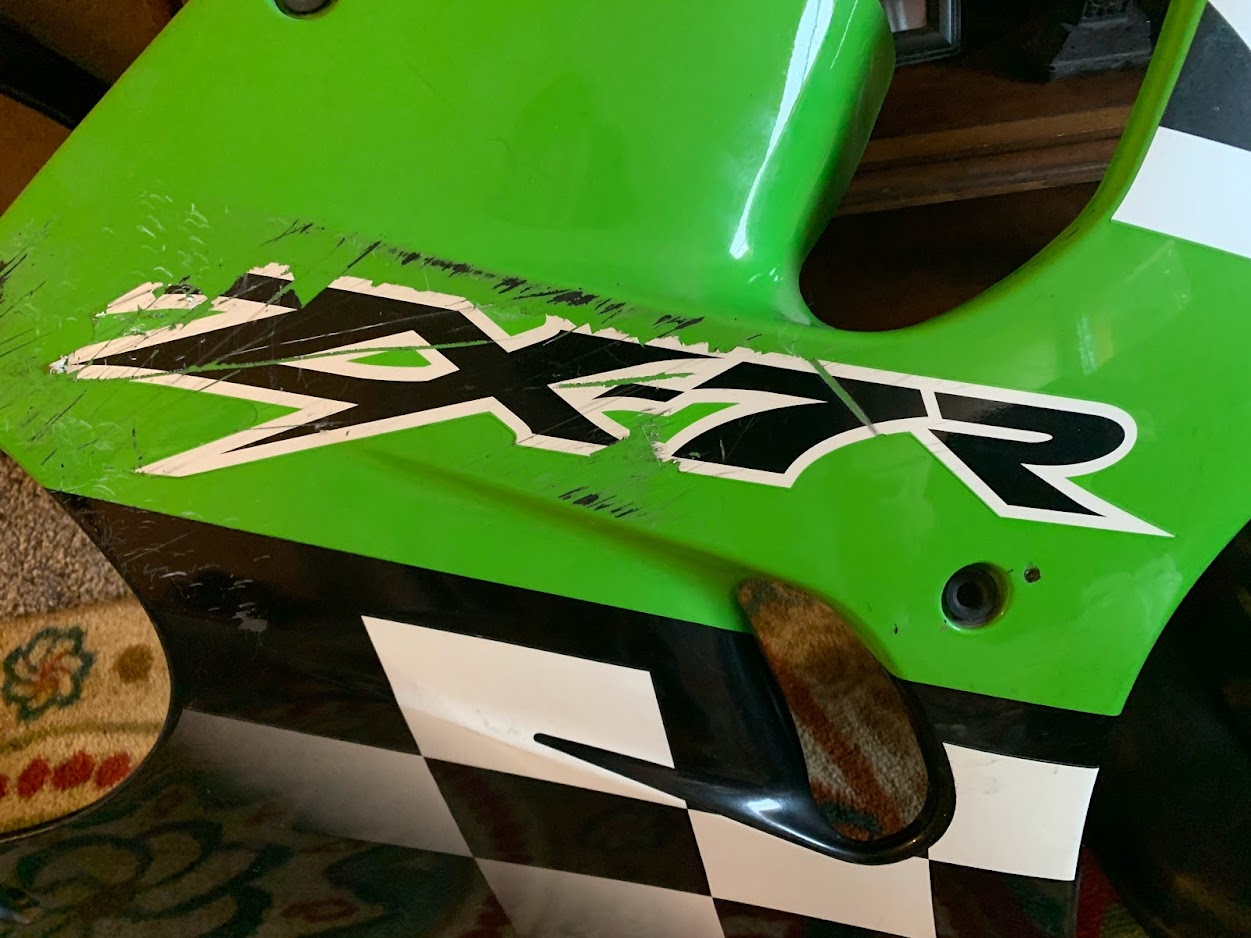
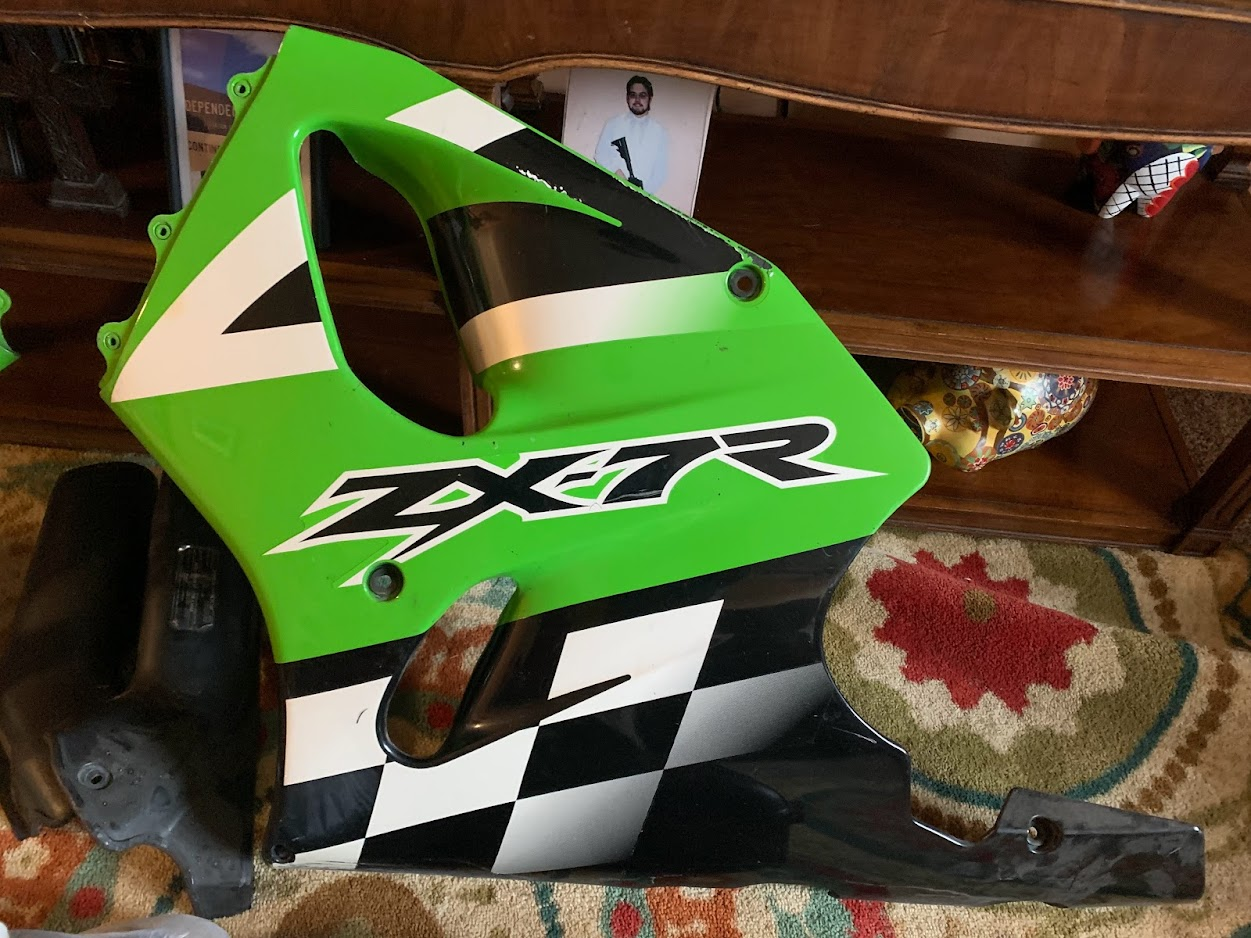
So here’s the to-do list for this project:
- Buy and install an air filter
- Bleed + RR fluid in clutch/brake systems
- New front tire (likely Michelin 2CT to match the rear, which is still usable)
- Insurance
- Registration
Then it’s off to the races. I intend to gently track the bike and ride it on the street next year. I don’t like to ride on the street, nor do I tend to enjoy talking to people who ride on the street, but I’m thinking it might be worth it to get out there and meet some new people as long as I keep my expectations and my attitude in check. I’m planning on showing up at more bike nights and canyon rides; maybe if I get lucky I can convince some more people to go racing. It’s going to be a fine bike to have some fun on, that’s for sure!
All that said, here’s a gratuitous photo dump of how the bike looked after I brought it home:
